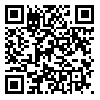Volume 2, Issue 7 (Summer 1999)
J Arak Uni Med Sci 1999, 2(7): 1-6 |
Back to browse issues page
1- School of Medicine, Arak University of Medical Sciences, Arak, Iran.
2- Faculty of Medicine, Tabriz University of Medical Sciences, Tabari, Iran.
3- Faculty of Medicine, Tabriz University of Medical Sciences, Tabriz, Iran.
2- Faculty of Medicine, Tabriz University of Medical Sciences, Tabari, Iran.
3- Faculty of Medicine, Tabriz University of Medical Sciences, Tabriz, Iran.
Abstract: (1072 Views)
Arterial baroreflexes are the most important mechanism of cardiovascular control. These reflexes compared with other reflexes act so rapidly that can respond to rapid blood pressure changes during daily activities. In this study we have assessed the cardiac responses of cardiac baroreflexes dynamic exercise , and compared the results with acute response during rest exercise. It was 50% of calculated maximum force. Experiments were performed on 12 young male healthy sedentary volunteers isometric exercise(protocol B) and dynamic exercise (protocol C). In order to stimulate the carotid baroreceptors neck suction device Eckberg model was used , ECG were taken continuously during experiment. In protocol A (control group) after stimulation the cardiac cycle (R-R interval) from baseline reached to acute responses in the first beat induction baseline in the forth beat P<0.003 and in the protocol C reached acute response compared with baseline in the eighth beat after induction P<0.001. If the observed acute responses during test are compared and concluded that shorting R-R interval in response to isometric due to vagal withdrawal combined with an subtle sympathetic stimulation. This phenomenon is observed more strongly in dynamic exercise.
| Rights and permissions | |
 |
This work is licensed under a Creative Commons Attribution-NonCommercial 4.0 International License. |


